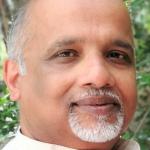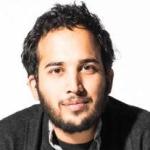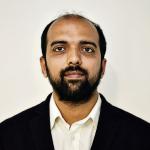Power, Peripheries, and the Indian State

As somebody who spent more than a decade in Delhi, the current atmosphere of violence in India’s capital city deeply saddens me. But I am not surprised. Maybe because I come from a part of India—its troubled Northeast periphery—where such violence was a part of life.
Understanding India’s Growth Slowdown

Three years ago, the Indian economy clocked a quarterly growth rate of over 9 percent. Now, growth has slowed to nearly half that rate, printing at 4.7 percent for the latest quarter (October-December 2019). Most estimates place growth for the current fiscal year, ending March 2020, at 5 percent, and for next year, 2020-21, at 6 percent. This is an astonishing slowdown for a country that, until recently, enjoyed bragging rights as the fastest growing large economy in the world.
Roshan Kishore
Roshan Kishore is the Data & Political Economy Editor at Hindustan Times, where his work largely involves data-driven commentary on the intersection of politics and economics. He holds an MPhil degree in Economics from Jawaharlal Nehru University and worked in a think tank before taking up journalism.
Focused Health Care Factories: An Answer to India’s Patient-Rich and Resource-Poor Health Care Ecosystem

All countries struggle to deliver affordable, high-quality health care to their citizens. If a resource-constrained nation like India has to achieve the twin goals of affordable and quality health care for all, it will require drastic re-engineering of the health care delivery model. India faces two main realities: a large population and low per capita GDP, leaving little room for the substantial investments necessary to build health care infrastructure. An acute shortage of doctors outside major metropolitan areas further compounds the problem.
Climate Change in India: Supersizing Risks for India’s Poor
About the Lecture:
Decades of short-sighted government policies endanger the health and well-being of millions of Indians in the age of climate change. Temperatures are rising in already hot places, the monsoon season is increasingly unreliable, coastal cities confront a rising sea, and glaciers are receding in the Himalayas. Greed and government mismanagement only makes matters worse, endangering the health and well being of India's hungriest, poorest people.
Toward a New Education Paradigm: Systems and Substance
As we embark upon a new decade, India celebrates the tenth anniversary of its Right to Education Act (RTE), which went into effect in April 2010. While the RTE has been censured for its limited focus on governance and learning outcomes, its achievement in improving access to schooling over the past ten years is undeniable. The RTE has also served as a rallying point for a wide range of stakeholders to intervene in the sector.






